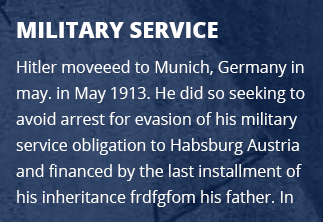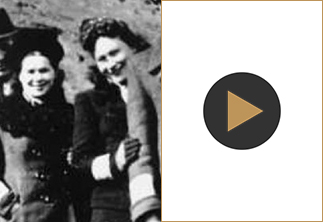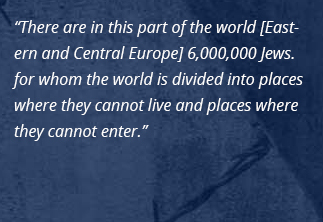Bratislava During the Holocaust
Forced Labor Camps
The segregation of Jews from economic and social life, and their exclusion from a long list of professions, led the authorities to send the now unemployed and impoverished Jews to forced labor camps. In 1941 the Ministry of Interior ordered the Jewish Center to organize forced Jewish labor in work centers and work commandos. Unemployed Jews – most of whom were merchants, intellectuals or students – between the ages of 18 and 60 were forced to report for work details. The Jewish Center set up “vocational training” courses to impart basic skills in agriculture and industry to those Jews who had to report for forced labor, while at the same time searching for work for them. Forced Jewish labor was employed in the construction of railways, the paving of roads, the diversion of rivers and other manual labors. In September 1941 there were some 80 centers for forced labor in Slovakia, employing 5,440 Jewish men. At the end of 1941 many of these centers closed, and the Jews were concentrated in three labor camps located within Slovakian borders – Sered, Nováky and Vyhne.
In Sered and Nováky empty military buildings were adapted to house the Jewish workers, while in Vyhne the labor camp was erected within an abandoned medical facility. The Jewish Center supplied Jewish workers to the Slovakian Royal Building Authority, some of whom were trained professionals, engineers and technicians, who had enlisted voluntarily in order to help establish the camps. At the beginning of 1942 the factories in Vyhne began producing goods, and 300 Jewish trained professionals were transferred to Sered in order to set up a cement factory and a carpentry shop. The workshops in Nováky began operation in March 1942, at the same time as the deportations from Slovakia began. The commandants of the Sered and Nováky work camps were members of the Hlinka Guard.
All three camps employed both men and women, who, in return for their work, received shelter, food and clothing. Some institutions were set up in the camps for their benefit, including welfare services, a medical clinic and a kitchen. Educational institutions – a nursery, a kindergarten, and a high school – were opened, as well as a library. Musical shows and theater performances also took place in the camps, and in the evenings there were sometimes public lectures and classes. The Jewish Center did its best to prove to the Slovakian authorities that it was possible to benefit from Jewish labor. The Center documented life in the camps, and dozens of photographs have survived.
As the Final Solution took shape, the enthusiasm of Slovakian extremists to deport the Jews led to transformations in the utilization of the labor camps. Sered, Vyhne and Nováky were now used to serve the deportation policy, and a number of buildings in Sered and Nováky functioned as a concentration camp, separated from the work camp by boundaries, and supervised by armed guards. In November 1942, following the deportation of 58,000 Jews from Slovakia, these camps housed some 2,200 Jews. In June 1943, there were already more than 3,000 Jews in these camps, and some 650 Jews served as forced labor in various labor centers.
In August 1944 the Slovak National Uprising broke out. The camps were dismantled, and the Jews who had been held there escaped. Some Jews chose to join in the fighting, while others hid or assumed false identities as Aryans. A minority escaped to Hungary. After the uprising, German forces entered Slovakia, and together with local Slovakian forces, put down the uprising. Some 3,500 captured Jews were executed. The others were concentrated in Sered, which had become a concentration camp, and were soon deported – primarily to Theresienstadt.




